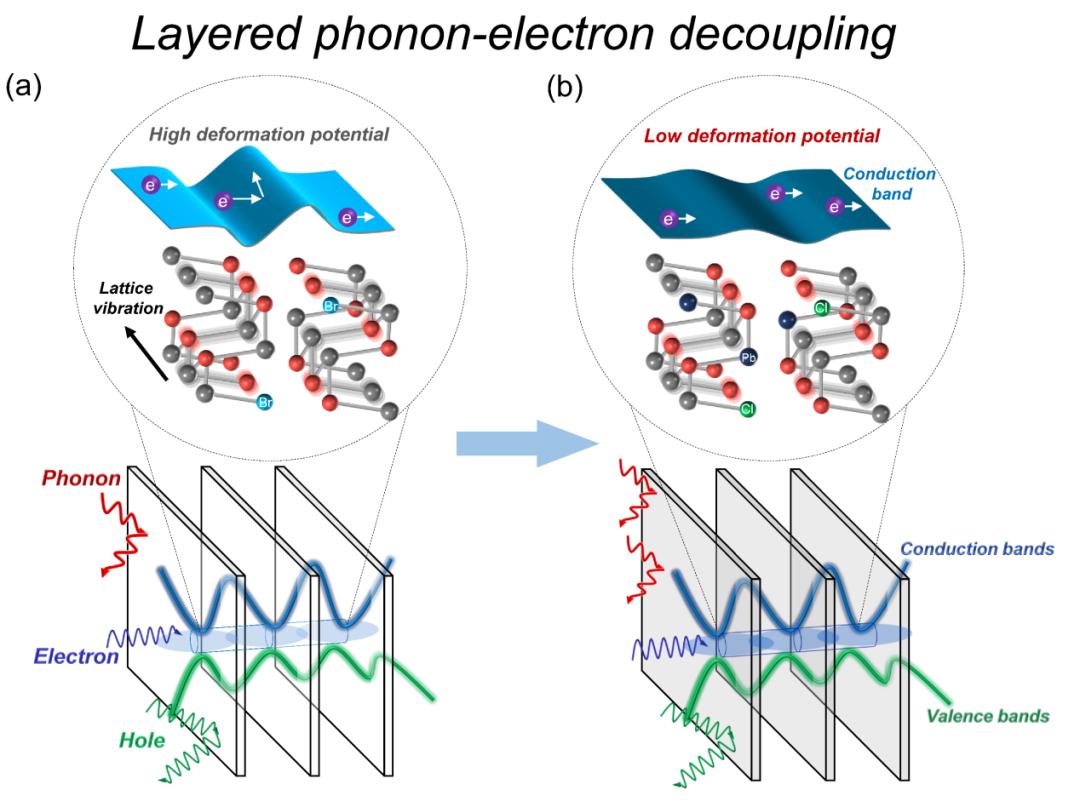On March 25, 2022, Science published an article titled “High thermoelectric performance realized through manipulating layered phonon-electron decoupling”, the new progress made by Prof. Zhao Lidong’s research group from the School of Materials Science and Engineering in the field of thermoelectric materials.

Su Lizhong, a doctoral student of Beihang University, is the first author. His supervisor Zhao Lidong and Chang Cheng from the Austrian Institute of Science and Technology are the corresponding authors. This article is the sixth paper published in Science by Prof. Zhao Lidong’s research group since 2015, with an average of one new achievement being published every year from 2018 to 2022.

The thermoelectric effect is a phenomenon that utilizes temperature differences to achieve electrical transport. High-performance thermoelectric materials have both high electrical and low thermal transport properties over a wide temperature range. However, high electrical conductivity and low thermal conductivity are contradictory. In this study, the low thermal conductivity of layered materials in the out-of-plane direction is utilized to improve the migration of carriers between layers along the out-of-plane direction by adjusting the crystal structure symmetry, thereby promoting electron tunneling in the in-plane direction. The result proves that the phonon-electron coupling can be effectively mitigated by using layered lattice structures.
Thermoelectric energy conversion technology, as a technology that can realize the direct conversion between heat and electricity, offering the potential for power generation and cooling. Therefore, the research and development of high-performance thermoelectric materials and improvement of the energy conversion efficiency of thermoelectric devices can effectively promote the application of thermoelectric modules in power generation and cooling, which is of great significance in the frontier field of science and technology.
The thermoelectric performance is determined by a dimensionless figure of merit ZT=S2σ/(κlat+κele), and higher ZT value means greater energy conversion efficiency. According to the definition of ZT value, the performance of thermoelectric materials can be divided into electrical transport properties and thermal transport properties. The key to enhancing thermoelectric performance is to improve the electrical transport properties and to reduce the thermal transport properties. However, the complex physical interrelationship between these parameters forms a tight phonon-electron coupling relationship, which poses a challenge for researchers.
SnSe is an anisotropic layered material with intrinsically low-thermal conductivity. The layered lattice structures endow SnSe crystals with two remarkable features: higher carrier mobility (μ) in the in-plane direction and lower lattice thermal conductivity (κlat) in the out-of-plane direction. These two characteristics provide unique advantages for decoupling SnSe crystals.
SnQ (Q = Se, S) crystals, whose thermoelectric performance has been developed by Prof. Zhao Lidong’s group for a long time, have strong anisotropy. After long-term screening studies, researchers have found that the in-plane direction exhibits excellent p-type transport characteristics, while excellent n-type transport performance in the out-of-plane direction. This study is a continuation of the out-of-plane directional transport properties of “3D charge / 2D phonon”, which further promotes the tunneling effect of in-plane electrons by the deformation potential change generated via adjusting the symmetry of the crystal structure. The tunneling effect, which is more pronounced at high temperatures, can achieve excellent thermoelectric properties.
SnSe has a continuous phase transition from low-symmetry Pnma phase to high-symmetry Pnma phase and then to Cmcm phase at 600–800 K. In addition to temperature, introducing stress into SnSe crystals through doping and alloying can adjust the symmetry of crystal structure, thus optimizing the thermoelectric properties, as shown in Fig. 1.

Fig. 1 Schematic of electron and phonon transports in SnSe crystal along the out-of-plane direction
In this study, the crystal structure symmetry of SnSe has been successfully improved by Cl doping and Pb alloying (verified by high-temperature synchrotron radiation experiments). The results show that Cl-doped SnSe (SnSe-Cl) crystals exhibit a lower deformation potential picture than Br-doped SnSe (SnSe-Br), so the carrier scattering caused by lattice vibration (phonon) is greatly reduced. That is, the degree of phonon-electron coupling is greatly reduced, and the carrier mobility (μ) can be increased by ~30%. At the same time, the introduction of an appropriate amount of Pb content can not only further enhance the low deformation potential caused by Cl, but also significantly reduce the lattice thermal conductivity (κlat) by ~25%. Phonon-electron decoupling successfully improves the out-of-plane thermoelectric performance of n-type SnSe crystals, as shown in Fig. 2.

Fig. 2 Phonon-electron decoupling improves the thermoelectric performance of n-type SnSe crystals in the out-of-plane direction
This work was supported by the Basic Science Center Project of the National Natural Science Foundation of China, the National Key Research and Development Program, the National Science Fund for Distinguished Young Scholars, the National Key Research and Development Program of China, etc.
Reported by Liang Weitao
Reviewed by Guo Hongbo
Edited by Jia Aiping
Translated by Zang Mingming

